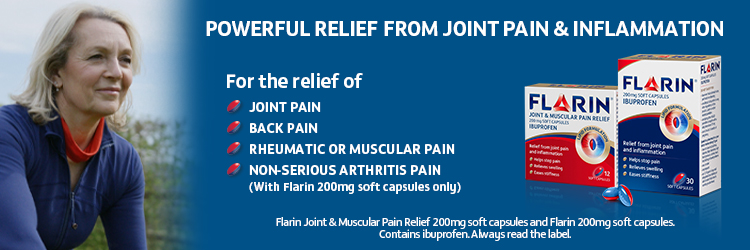
Philip Lindsell
Managing Director, Flarin Holdings
Joint pain often strikes people just as they are seeking to remain active as they enter their older years.
Joint pain is a major issue within an ageing population and one that adds to the burden on an already overstretched health service in the UK. Its onset often comes among people aged 55 and upwards at a time when they still want to remain active into their later years by exercising and maintaining a good level of mobility.
However, pain in the back, shoulder, hips, knees and elbows can hinder this. The Consumer Healthcare Association (PAGB) Self-Care Census 2024 indicated, for example, that 10% of all GP appointments relate to backache.
Joint pain interventions
There are over-the-counter solutions that can help people stay fit, healthy and mobile and reduce the need to see a doctor. Philip Lindsell, Flarin Holdings Managing Director, explains that living with persistent joint and muscular pain goes far beyond physical discomfort.
“It can lead to an emotional burden, more GP and NHS visits, increased sick days at work and difficulties with everyday tasks,” he says. “For many, this can have a huge impact on quality of life and independence. Increased self-care can eliminate the need for a doctor visit, reducing pressure on the NHS and also saving patients’ time and enabling them to treat their pain more quickly.”
Living with persistent joint and muscular pain
goes far beyond physical discomfort.
Reducing NHS pressures
According to Lindsell: “At Flarin, we believe that by helping to ease pain through our patented formulation, we can make a real difference — supporting people not just to manage their symptoms, but to stay active, reduce disruption to their daily lives, and live more fully.”
The analgesic Flarin is aimed at the 55+ market, as that demographic tends to suffer increasing levels of joint and muscular pain. However, he says market research, supported by anecdotal evidence, indicates that there are also significant numbers of younger users, such as those who are active in sport or suffer work-related pain.
Relief from pain and inflammation
Flarin is an oral painkiller, based on a lipid formulation of ibuprofen, which is absorbed in the small intestine and can be taken continuously for up to 10 days, with or without food and without consulting a doctor.
Lindsell says that in a clinical trial, it was shown to be as effective as twice the dose of standard ibuprofen and gives patients ‘powerful relief from pain and inflammation.’ Flarin is widely available in supermarkets, pharmacies and online.




